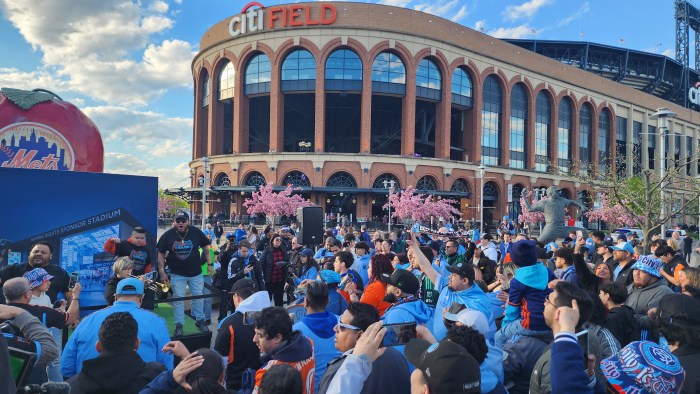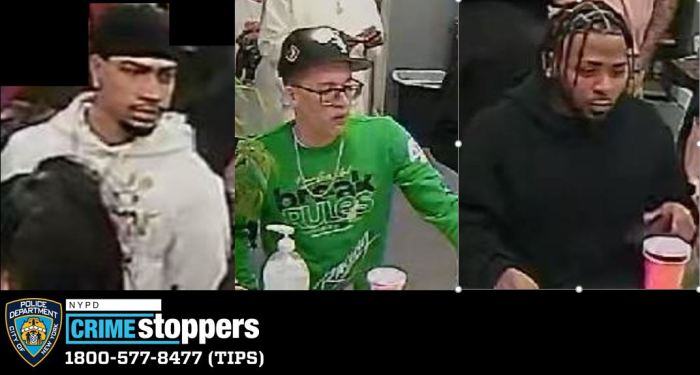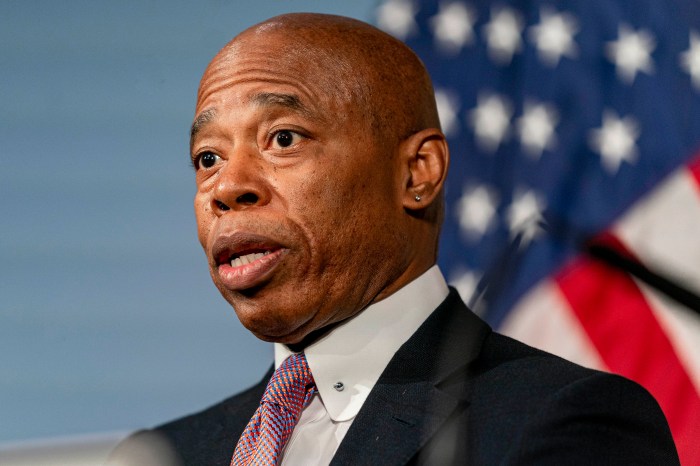By Katy Gagnon
When Jaishri Abichandani was 14 years old, she came to America. She didn't want to come. But her father, an officer for the government railways in India, thought Abichandani and her older brother would receive a better education in the United States. So, they came to Queens. It was a far cry from her childhood in the small towns outside Bombay. And because it was summer when her family moved, she spent her first few months in America sitting around her family's apartment, watching TV and waiting for school to start. But the classrooms and halls of John Bowne High School were little comfort at first. It took weeks for Abichandani to understand the accents of her American peers. Eventually she adjusted, graduated from high school and went on to study art at the University of London. It wasn't the only time Abichandani had to adapt between different worlds.In her exhibit “Reconciliations” at the Queens Museum of Art, Abichandani explores merging cultures, societies and ideologies through a series of digitally altered photographs, which combine the landscapes of international cities. The exhibit features photographs of city pairs such as London and Mumbai or Lima and Santiago that are so seamlessly joined, it takes a moment to realize you aren't looking at one photograph. Most of the photos are from the Internet, from sites like Wikipedia. In fact, the idea for this project came as Abichandani was researching the friendship between Hugo Chavez and Fidel Castro and came across images from Lima, Peru, and Santiago, Chile. In an essay on the project she wrote, “The two photographs on the screen drifted together in my mind,” and following this impulse she “downloaded and digitally manipulated to physically manifest what I had imagined.”But digital mastery and prowess of Adobe Photoshop aren't the only things at play in Abichandani's exhibit. Each city joined symbolizes a larger connection. Whether it is the colonial history of “LondonMumbai,” the totalitarian political overtones of “HavanaPyongyang” or the economic competition in “NewYorkTokyo,” each photograph features a coming together of two separate but connected worlds.”It's a challenge to your imagination to look at how these photographs are combined,” said Tom Finkelpearl, director of the Queens Museum of Art. “And then to think about the way the world is beginning to blend together and the way people are beginning to blend together.”Abichandani hasn't visited every city featured in her collection. But, there is one piece she knows well. In the photograph “WilletsPointDharavi,” Abichandani surreptitiously places the Dharavi slums of Mumbai, India, next to a block of auto repair shops in the notoriously hardscrabble district of Willets Point. Abichandani remembers living near the largest slums in Mumbai and the rank smell of the creek that ran through them. She also lived in Corona for 20 years and questioned “where the First and Third World are really located when the É disenfranchised are always in peril.”Today, Abichandani is an international artist and an activist. She lives in Brooklyn and works part time at the Bronx Museum. She plans to show “Reconciliations” in India later this year and hopes to add more images to her collection.”There's a real hope in these images for some people to get over their differences, come to a common understanding and come together as humans on this planet,” she said, “and care for their planet – not just their nations or their cities.”If You GoJaishri Abichandani: “Reconciliations”Date: Through March 23Time: WednesdayÐFriday, 10 a.m.Ð5 p.m., Saturday & Sunday, noonÐ5 p.m.Location: Queens Museum of Art, New York City Building, Flushing Meadows Corona ParkCost: Suggested donation $5 adults, $2.50 seniors and children; members and under 5 freeFor More: 718-592-7000 or www.queensmuseum.org































